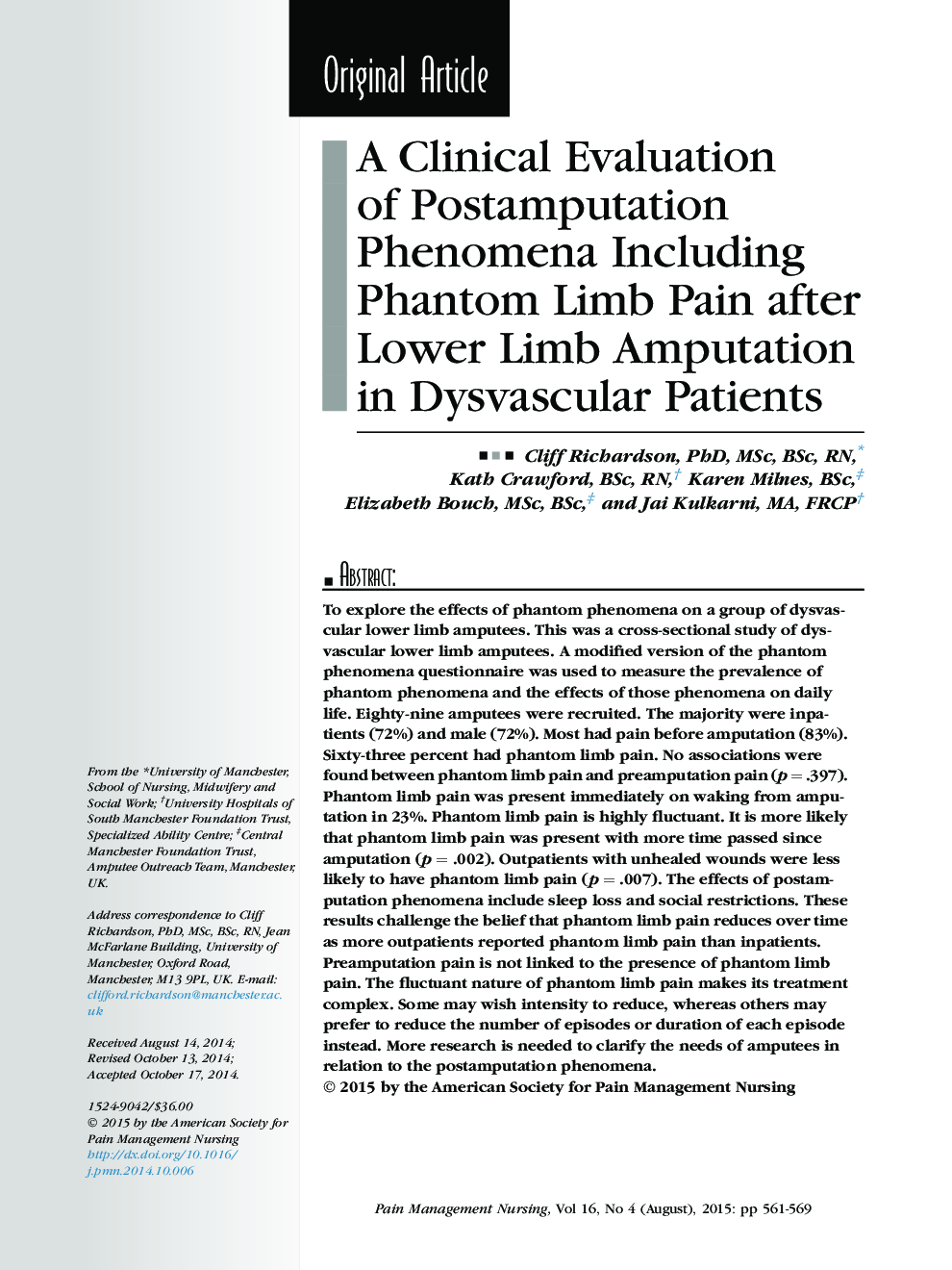| Article ID | Journal | Published Year | Pages | File Type |
|---|---|---|---|---|
| 2677955 | Pain Management Nursing | 2015 | 9 Pages |
•Mean pre-amputation pain is higher than the mean post-amputation pain•No link has been established between pre-amputation pain and the development of phantom limb pain•There was no support for PLP reducing over time•Outpatients with unhealed stump wounds are less likely to have PLP
To explore the effects of phantom phenomena on a group of dysvascular lower limb amputees. This was a cross-sectional study of dysvascular lower limb amputees. A modified version of the phantom phenomena questionnaire was used to measure the prevalence of phantom phenomena and the effects of those phenomena on daily life. Eighty-nine amputees were recruited. The majority were inpatients (72%) and male (72%). Most had pain before amputation (83%). Sixty-three percent had phantom limb pain. No associations were found between phantom limb pain and preamputation pain (p = .397). Phantom limb pain was present immediately on waking from amputation in 23%. Phantom limb pain is highly fluctuant. It is more likely that phantom limb pain was present with more time passed since amputation (p = .002). Outpatients with unhealed wounds were less likely to have phantom limb pain (p = .007). The effects of postamputation phenomena include sleep loss and social restrictions. These results challenge the belief that phantom limb pain reduces over time as more outpatients reported phantom limb pain than inpatients. Preamputation pain is not linked to the presence of phantom limb pain. The fluctuant nature of phantom limb pain makes its treatment complex. Some may wish intensity to reduce, whereas others may prefer to reduce the number of episodes or duration of each episode instead. More research is needed to clarify the needs of amputees in relation to the postamputation phenomena.
